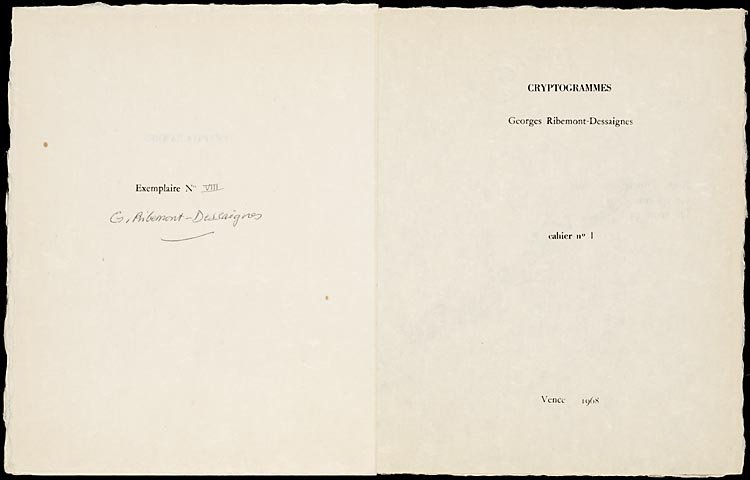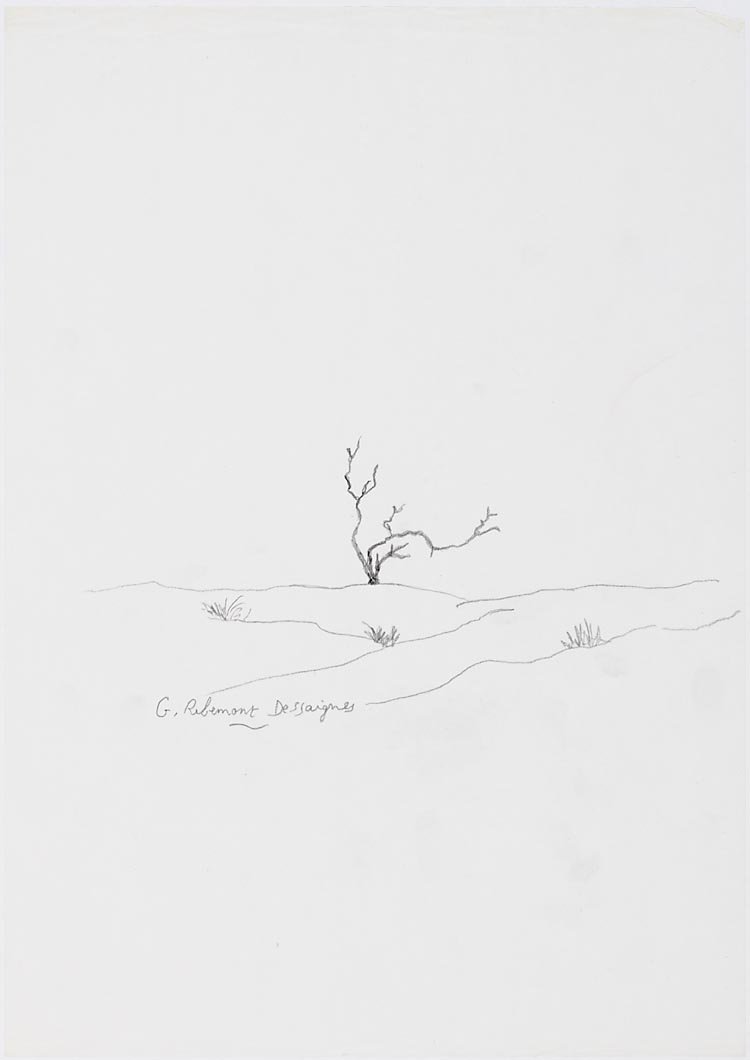Cryptogrammes : cahier no. 1
Year: 1968
Author: Georges Ribemont-Dessaignes (1884 - 1974)
Artist: Georges Ribemont-Dessaignes (1884 - 1974)
Publisher: Pierre Chave
Pierre Chave
Pierre Chave was the publisher of Cryptogrammes: cahier no. 1, and also published Cryptogrammes II. Together with his wife, he continued his work at the Galerie Alphonse Chave, which had been founded in 1947 by an art-loving relative in the small town of Vence in the south of France. Besides his work as a gallery owner he published works by and about Dadaist and surrealist artists such as Henri Michaux, Fred Deux, Max Ernst and Jacques Prévert.
Iris colours on Japanese paper
Chave's edition is rather unique. It is number VIII of 10 on Japanese iris paper with a mother-of-pearl gloss, a soft texture and clearly visible paper fibres. The twenty lithographs in this edition each have their own gradual dissipation of colour. This shows Ribbemont-Dessaignes' predilection for Japanese aquarelles, which also make frequent use of flowing iris colours. The drawings from Cryptogrammes have a minimalist, unspecific character that seems to resemble impressionism's empty landscapes. At first glance, they do not seem to be all that remarkable, but closer observation will yield strange, poetic images in a theatrical setting: an eye in a moon, looking down upon a cricket; a heart on rocks with butterflies perched upon it; a head as a flower pot and tree trunks that resemble women or chopped-off limbs.

![Gedicht door Ribemont-Dessaignes (p. [36])](/sites/default/files/styles/galerie/public/images/cryptogrammes-p36.jpg?h=2a43dbe3&itok=ftdR2I0s)
![Illustratie door Ribemont-Dessaignes (p. [37])](/sites/default/files/styles/galerie/public/images/cryptogrammes-p37.jpg?h=4383cfe0&itok=mta-pcOc)

